Article by: Phil Lindeman of Summit Daily posted on 10/18/2016
Most folks would quit a puzzle with no solution. Then again, Kristina Dougherty isn’t your average puzzlemaster.
“I’ve always looked at the river like a giant puzzle,” said Dougherty, a guide with Anglers Covey in Colorado Springs and member of Gore Range Anglers, the Summit County chapter of nonprofit Trout Unlimited. “When you can crack that code — when you find the right combination of flys and small adjustments to get a fish — it’s the best. I love the fact you can never learn it all.”
On Oct. 20 (as in tomorrow), Dougherty and another female guide, Summit resident Sarah Barclay of Blue Quill Angler in Evergreen, bring their love of fly-fishing, rivers and all the associated puzzles to the monthly meeting of Gore Range Anglers. The topic for the month: how female guides across the state and nation are breaking into a sport that’s traditionally been dominated by dudes. Officials with Gore Range Anglers asked Dougherty and Barclay to talk about their wildly different experiences with fly-fishing, but it’s still no surprise that the two share a passion for the small and sometimes frustrating aspects of the sport.
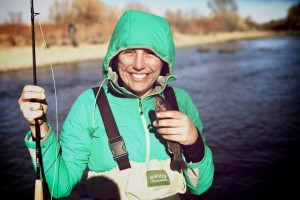 “It’s the consummate riddle that’s never solved, when you’re on the river and fishing,” said Barclay, a real estate agent with Slifer, Smith and Frampton who’s been moonlighting as a guide with Blue Quill Angler for more than a decade. “And it takes you to beautiful places. Just don’t wait for it to show up on your bucket list — get out there now.”
“It’s the consummate riddle that’s never solved, when you’re on the river and fishing,” said Barclay, a real estate agent with Slifer, Smith and Frampton who’s been moonlighting as a guide with Blue Quill Angler for more than a decade. “And it takes you to beautiful places. Just don’t wait for it to show up on your bucket list — get out there now.”
That’s exactly what Barclay did 12 years ago, when her boyfriend bought her waders and boots for Christmas. It became the best Christmas gift she ever received, she said, and she soon fell head over heels for everything angling: the flys, the technique, the water, the serenity.
Along with her angling career — she’s been a guide for more than a decade and regularly works with at-risk youth — Barclay also plans to talk about one of her favorite locations: the Bighorn River in Montana, a tributary of the Yellowstone River. She discovered it not long after discovering the sport, and today she considers it her home river.
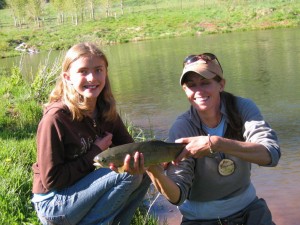 “A guide friend told me: ‘Have a river that you fish and know intimately, all times of the year and in all conditions,’” said Barclay, who travels north to the Bighorn at least four times per year. “So I followed what he said, and now I fish it in winter and summer, all year long, from low flows to high flows.”
“A guide friend told me: ‘Have a river that you fish and know intimately, all times of the year and in all conditions,’” said Barclay, who travels north to the Bighorn at least four times per year. “So I followed what he said, and now I fish it in winter and summer, all year long, from low flows to high flows.”
Dougherty’s introduction to the angling puzzle came about 15 years ago, when she was fresh out of high school and learned to fish with her dad.
“A lot of people learn from their dads, but we went through the process together,” Dougherty said. “We had a lot of laughs that way. I’ve always been kind of a daddy’s girl, so if he was going to do it I wanted to be there too. He didn’t realize he created a monster. The addiction took root right away.”
In March, Dougherty turned her addiction into a full-time guiding gig with Anglers Covey, which boasts six female guides. She regularly fishes the South Platte and Arkansas rivers and joins trips across the region with a female-friendly group, Pikes Peak Women Anglers, with nearly 30 members in Colorado Springs. She also leads mother-daughter trips, like an excursion last week when one of the novice mothers caught three fish in 30 minutes. She must have heeded Dougherty’s advice: “Don’t overthink it.”
“By experience, women pick up the sport faster than men,” Dougherty said. “They use more finesse, they pick up on casting quicker, and all of that is important when you’re starting. Just try to learn as much as possible in your own time.”
Barclay’s advice for ladies? Follow her example and give it a go.
“There are so many people who would love to teach you and help you,” Barclay said. “We are blessed in our county to have over six fly-fishing shops, these star-studded rivers, and it’s a really fun demographic to be a part of. Everyone is fired up to help everyone else.”






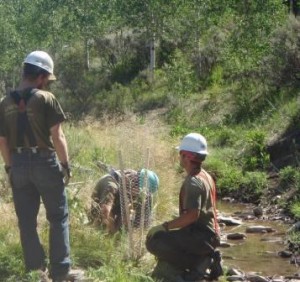
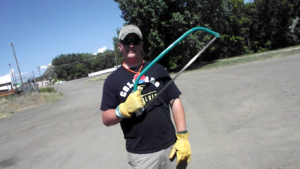 At the
At the 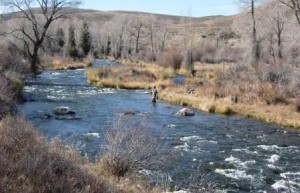
 Over the last decade population studies on the Animas have shown a decline. Although this year there wasn't a turn around, CPW Biologist Jim White told the Durango Herald, "It's been a really nice fish year. It’s definitely been more abundant than years past.”
Over the last decade population studies on the Animas have shown a decline. Although this year there wasn't a turn around, CPW Biologist Jim White told the Durango Herald, "It's been a really nice fish year. It’s definitely been more abundant than years past.” While the Animas is improving, the future of Cutthroat Trout in Hermosa Creek also have a bright future as stream improvements have been made to prepare for Colorado River Cutthroat reintroduction.
While the Animas is improving, the future of Cutthroat Trout in Hermosa Creek also have a bright future as stream improvements have been made to prepare for Colorado River Cutthroat reintroduction.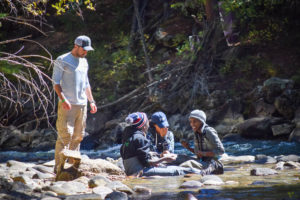 Forward Rising Inc, the creator of Forward Rising camp, is a new organization that focuses on engaging inner city girls through conservation, fishing, and the great outdoors. The organization hopes to use these activities to offer the girls outlets to the challenges they face.
Forward Rising Inc, the creator of Forward Rising camp, is a new organization that focuses on engaging inner city girls through conservation, fishing, and the great outdoors. The organization hopes to use these activities to offer the girls outlets to the challenges they face.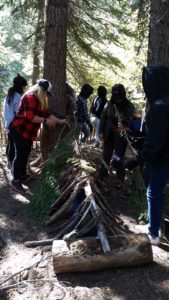 Saturday morning started out pretty chilly so everyone was moving a bit slower, but you could sense the excitement in the air! We kicked off our day with a session on wilderness survival from Mary Margaret Sweeney, PhD – Director at
Saturday morning started out pretty chilly so everyone was moving a bit slower, but you could sense the excitement in the air! We kicked off our day with a session on wilderness survival from Mary Margaret Sweeney, PhD – Director at 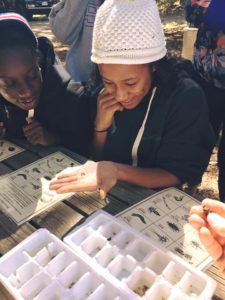 The girls suited up in waders and boots and headed to North Fork of the South Platte River to search for bugs. After turning over rocks and doing the “San Juan shuffle” in front of the bug seines we came away with a few bugs that would later be identified as mayflies, small craw-fish and a couple worms. After a lesson in entomology and discussions around the importance of healthy rivers we tied up some San Juan worms in hopes of tricking the fish!
The girls suited up in waders and boots and headed to North Fork of the South Platte River to search for bugs. After turning over rocks and doing the “San Juan shuffle” in front of the bug seines we came away with a few bugs that would later be identified as mayflies, small craw-fish and a couple worms. After a lesson in entomology and discussions around the importance of healthy rivers we tied up some San Juan worms in hopes of tricking the fish!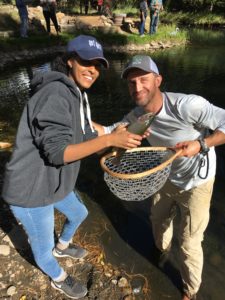 Sunday morning came faster than we expected and the weekend was coming to an end. The weekend contained many firsts – 1st time being in the river, 1st time putting up a tent and sleeping outside, 1st time catching a fish, 1st time making s’mores, 1st time seeing the stars and for some, 1st time being out of Denver. As we cleaned up camp and packed up the van there was still a lot of excitement about the weekend!
Sunday morning came faster than we expected and the weekend was coming to an end. The weekend contained many firsts – 1st time being in the river, 1st time putting up a tent and sleeping outside, 1st time catching a fish, 1st time making s’mores, 1st time seeing the stars and for some, 1st time being out of Denver. As we cleaned up camp and packed up the van there was still a lot of excitement about the weekend!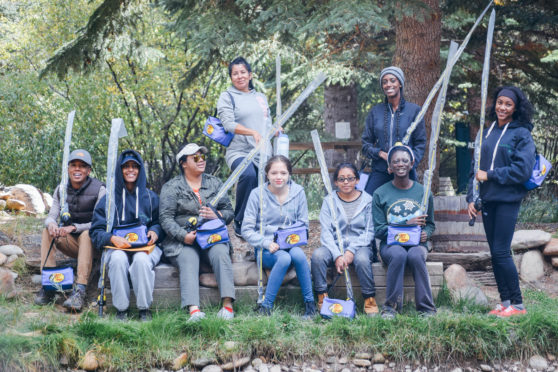
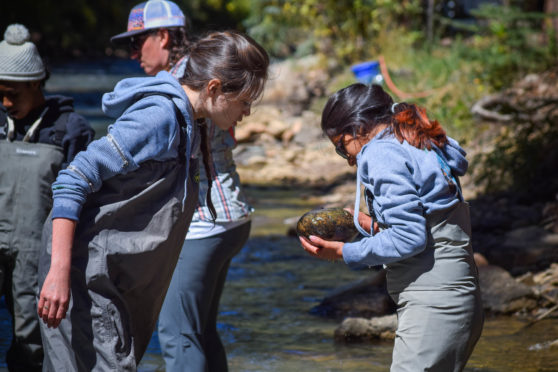
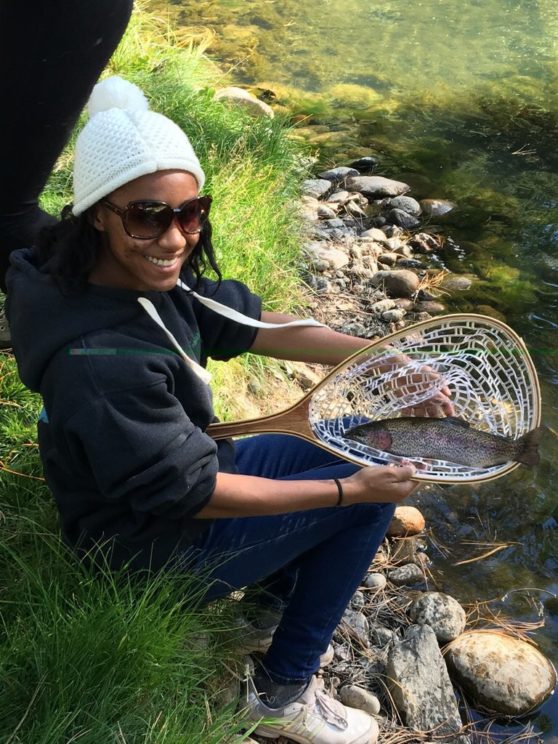
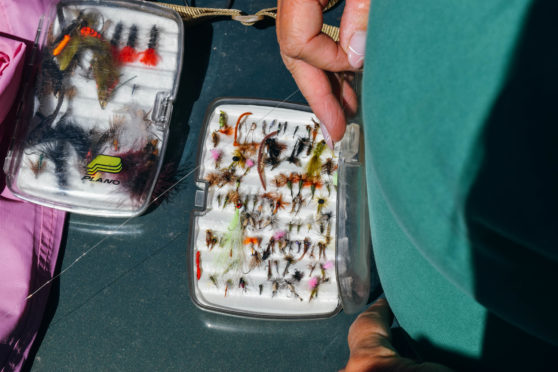
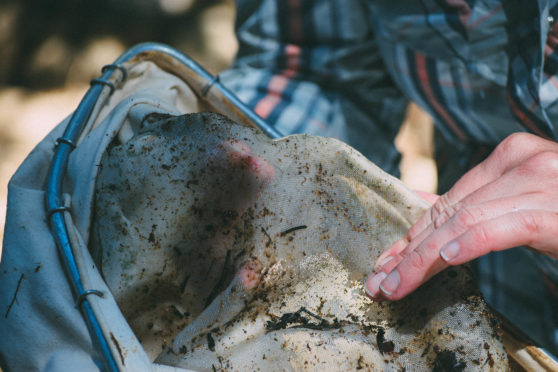
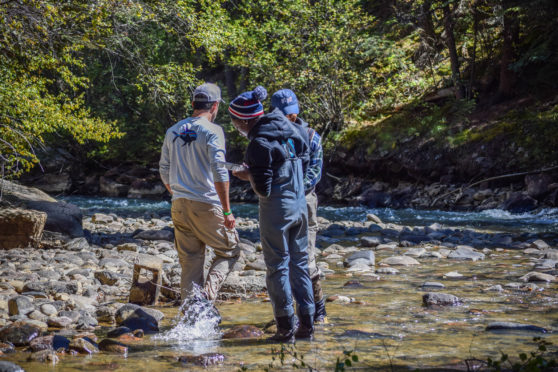
 Our chapter's ongoing conservation work on the South Platte River near Deckers strikes a chord with me. One of my earliest memories of being outdoors with my Dad is when he would take me there with his buddy and I would play in the shallows at the edge of the river. Later my good fishing buddy/college roommate and I spent many a pleasant weekend camping there and fishing those waters. Later on I had a great dog, a lab mix, and he would love to go along. We would do our best to keep him out of the water to avoid scaring fish, but he always managed to come home soaked, muddy, and contented. My buddy is busy with family now, and both my father and the dog have passed on. When the Hayman Fire roared through the area it broke my heart. Now the river is recovering with the help of our efforts, those of CUSP, and others. I am honoring the memories of those times I have spent on that river when I do my share to preserve its health and beauty.
Our chapter's ongoing conservation work on the South Platte River near Deckers strikes a chord with me. One of my earliest memories of being outdoors with my Dad is when he would take me there with his buddy and I would play in the shallows at the edge of the river. Later my good fishing buddy/college roommate and I spent many a pleasant weekend camping there and fishing those waters. Later on I had a great dog, a lab mix, and he would love to go along. We would do our best to keep him out of the water to avoid scaring fish, but he always managed to come home soaked, muddy, and contented. My buddy is busy with family now, and both my father and the dog have passed on. When the Hayman Fire roared through the area it broke my heart. Now the river is recovering with the help of our efforts, those of CUSP, and others. I am honoring the memories of those times I have spent on that river when I do my share to preserve its health and beauty. “It’s just transfer. It’s not like we’re selling them.”
“It’s just transfer. It’s not like we’re selling them.”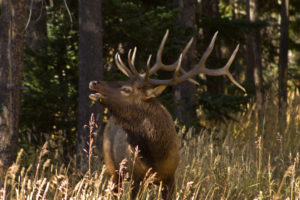 Public lands are for anglers, hunters, hikers, campers, backpackers, energy producers, mountain climbers, berry pickers, ranchers, horse packers, birders, timber operators, miners, snowmobilers, ATVer’s, mountain bikers.
Public lands are for anglers, hunters, hikers, campers, backpackers, energy producers, mountain climbers, berry pickers, ranchers, horse packers, birders, timber operators, miners, snowmobilers, ATVer’s, mountain bikers. Public lands are part of what define us as Americans. They are what remain of the great westward migration of the nation. They are the crucible upon which the character of the nation was formed. Our forebears left these lands to us, not so we could sell them to the highest bidder. They left them to us as an heirloom to pass on intact to the next generation. These lands are our birthright. They are a beacon of blinding and unwavering light on what it means to be free.
Public lands are part of what define us as Americans. They are what remain of the great westward migration of the nation. They are the crucible upon which the character of the nation was formed. Our forebears left these lands to us, not so we could sell them to the highest bidder. They left them to us as an heirloom to pass on intact to the next generation. These lands are our birthright. They are a beacon of blinding and unwavering light on what it means to be free.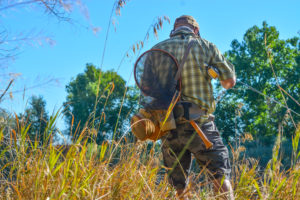 For the last 10 years, Denver Trout Unlimited has hosted the
For the last 10 years, Denver Trout Unlimited has hosted the  Chris Galvin, defending champion, hooked into one of the Mile High Stadium carp under the I-25 bridge and carefully moved it downstream in order not to disturb the pod. Ten minutes later, he tricked another for a masterful 2 fish within a few minutes. He added another only ten minutes before the morning session ended to take the lead going into the lunch break at Black-Black Cafe.
Chris Galvin, defending champion, hooked into one of the Mile High Stadium carp under the I-25 bridge and carefully moved it downstream in order not to disturb the pod. Ten minutes later, he tricked another for a masterful 2 fish within a few minutes. He added another only ten minutes before the morning session ended to take the lead going into the lunch break at Black-Black Cafe. Second place was snatched by Trevor Tanner and Kyle Richards. Third place went to the team of Frank Smethurst and rookie Vernon Naake with 3 fish for 70.38 inches.
Second place was snatched by Trevor Tanner and Kyle Richards. Third place went to the team of Frank Smethurst and rookie Vernon Naake with 3 fish for 70.38 inches.

